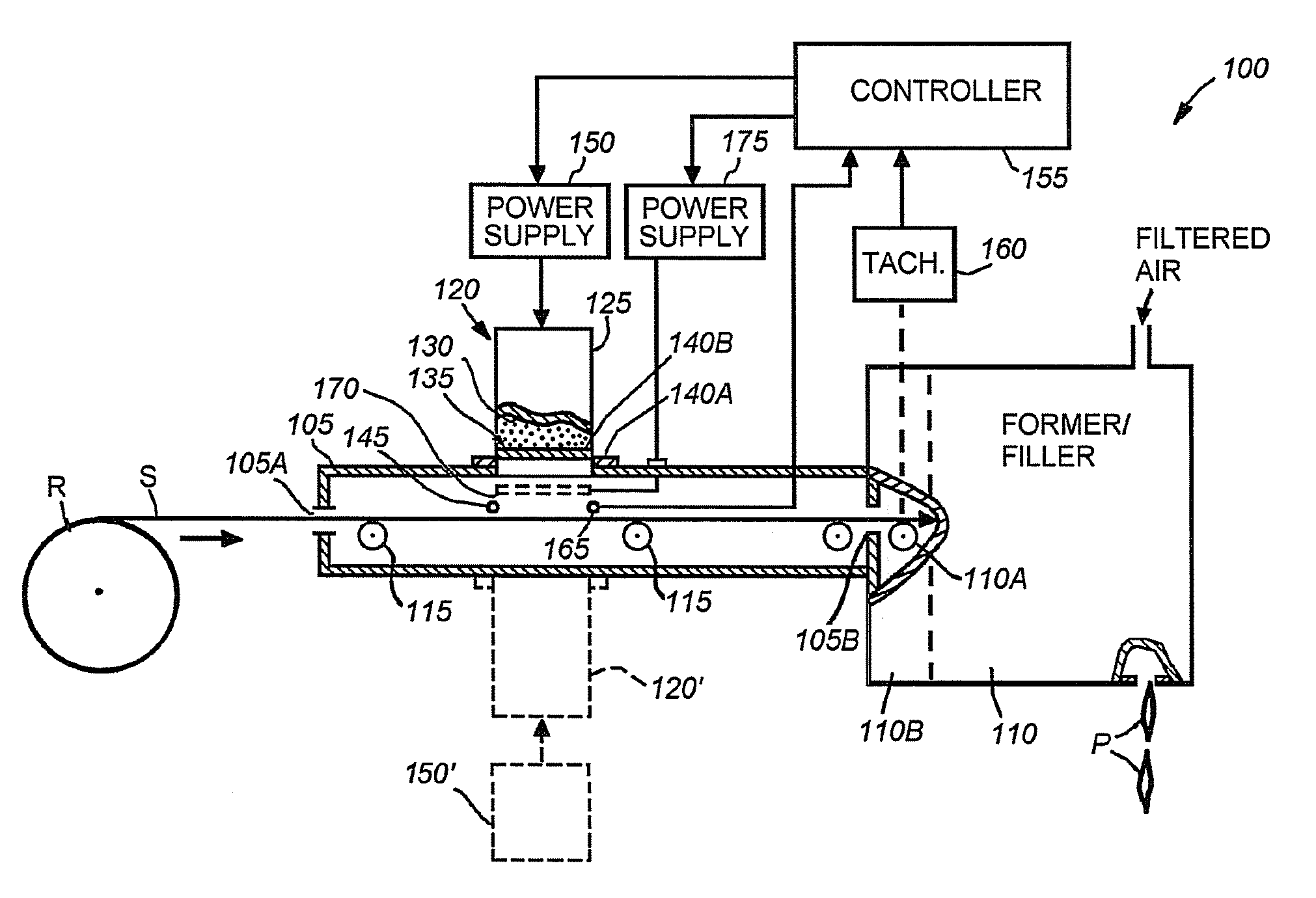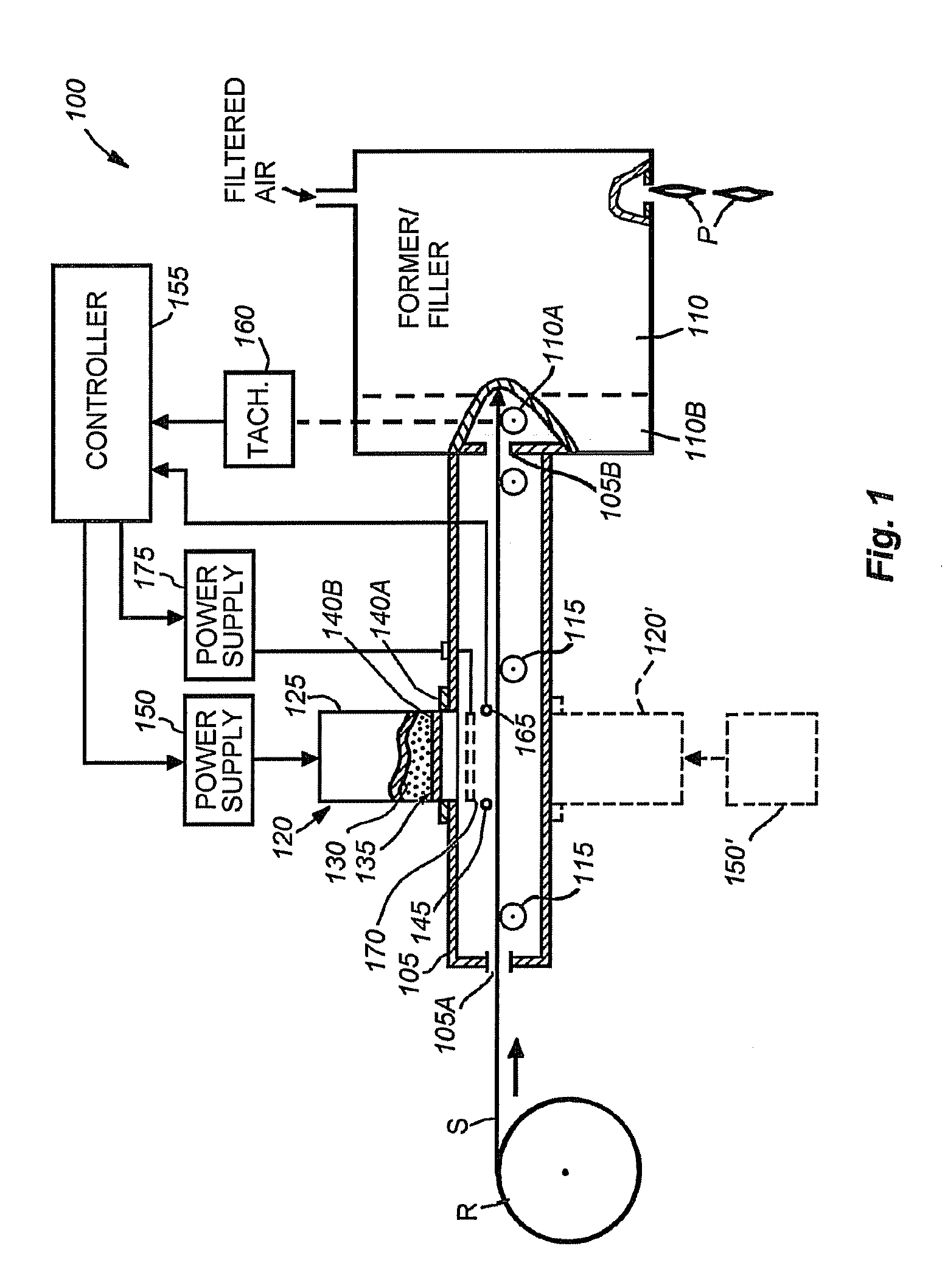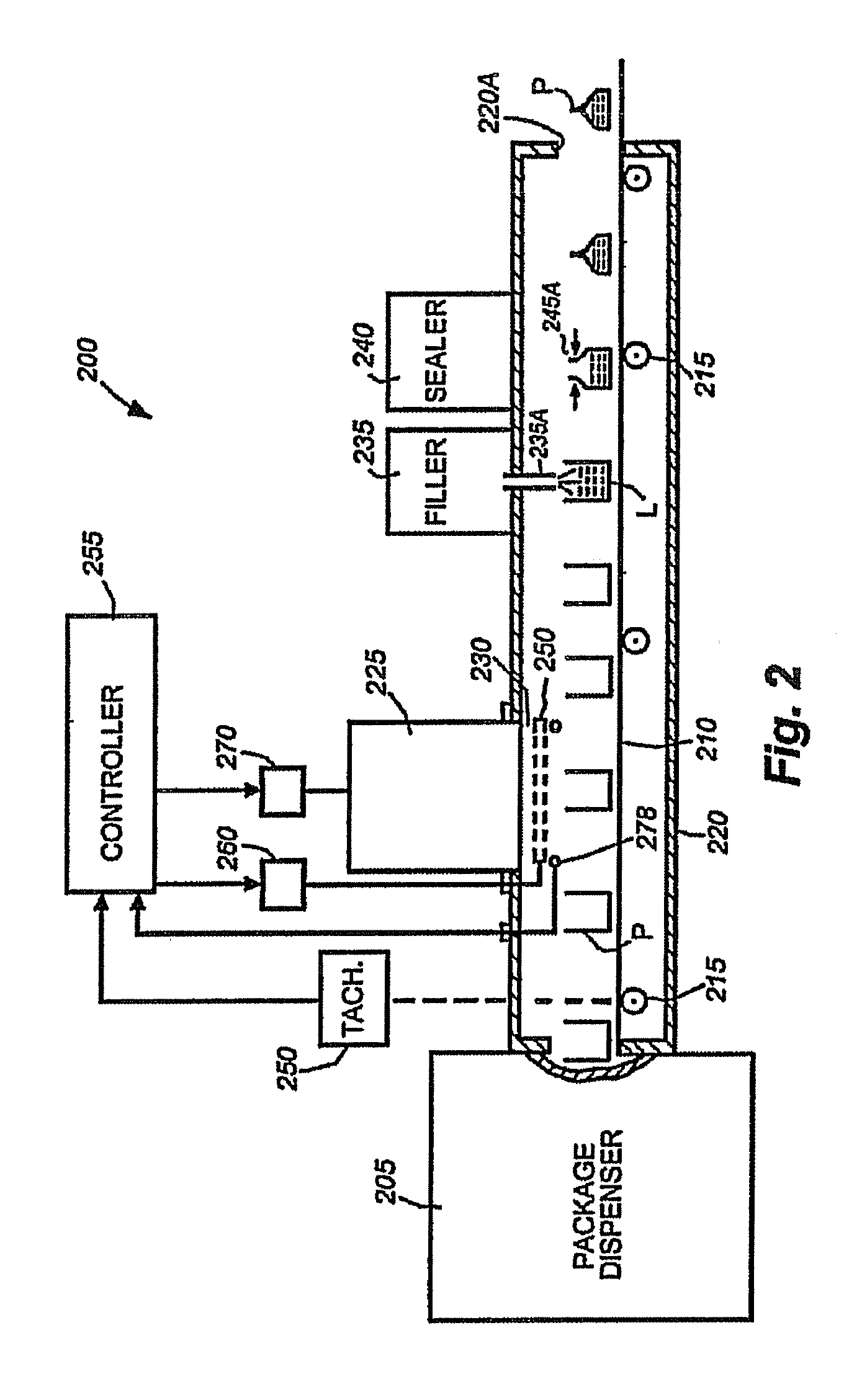Method and apparatus for ebeam treatment of webs and products made therefrom
- Summary
- Abstract
- Description
- Claims
- Application Information
AI Technical Summary
Benefits of technology
Problems solved by technology
Method used
Image
Examples
Embodiment Construction
[0033]A. Modulation of Window Control
[0034]FIG. 1 illustrates an exemplary aseptic packaging apparatus environment 100 in which a packaging substrate S drawn from a roll R is conducted through a slit 105A at the entrance end of an elongated housing 105 whose exit end is connected to an exemplary processing machine 110. Substrate S is guided along housing 105 by a series of guide rollers 115 to an exit slit 105B that connects housing 105 to the interior of machine 110. Thereafter, the guidance of the substrate is taken over by a guide roller 110A in that machine. Substrate S is illustratively comprised of plastic film. It should be noted that in alternative embodiments, differing substrates may be utilized. As such, the description of substrate S being comprised of plastic film should be taken as exemplary only.
[0035]The illustrated machine 110 is illustratively a forming and filling machine which may be of any known type. Machine 110 accepts the substrate S and illustratively forms ...
PUM
| Property | Measurement | Unit |
|---|---|---|
| Density | aaaaa | aaaaa |
| Speed | aaaaa | aaaaa |
| Electric potential / voltage | aaaaa | aaaaa |
Abstract
Description
Claims
Application Information
 Login to View More
Login to View More - R&D
- Intellectual Property
- Life Sciences
- Materials
- Tech Scout
- Unparalleled Data Quality
- Higher Quality Content
- 60% Fewer Hallucinations
Browse by: Latest US Patents, China's latest patents, Technical Efficacy Thesaurus, Application Domain, Technology Topic, Popular Technical Reports.
© 2025 PatSnap. All rights reserved.Legal|Privacy policy|Modern Slavery Act Transparency Statement|Sitemap|About US| Contact US: help@patsnap.com



